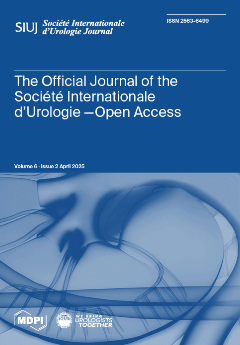Background/Objectives: Late toxicity following radiotherapy is common and compromises patient quality of life. However, the impact of toxicity on patient-reported outcome measures (PROMs) five years after prostate external beam radiotherapy (EBRT) is poorly characterised. We describe PROMs using the Expanded Prostate Cancer Index Composite (EPIC-26) five years post-EBRT compared against radical prostatectomy (RP).
Methods: A prospective cohort of patients with localised prostate cancer treated from 2000 to 2020 captured by a state-level cancer registry was analysed. Multivariable mixed-effects linear modelling was performed to compare differences between EPIC-26 domains over time between ERBT and RP patients. The percentage of patients recording a decline in EPIC-26 domains compared with baseline which exceeded the minimal clinically important difference (MCID) was calculated and compared between groups. Additionally, subgroup analysis was performed on patients treated using contemporary techniques.
Results: There were 1720 patients (EBRT n = 1441 vs. RP n = 279) with evaluable EPIC-26 PROMS. Patients in the EBRT group had a higher median age (74 vs. 66,
p < 0.001) and National comprehensive Cancer Network (NCCN) high-risk disease (61% vs. 24%,
p < 0.001). Bowel domain scores were worse after EBRT compared to RP (beta −0.46, 95% CI −1.20–−0.28,
p < 0.001), with a greater proportion of patients reporting a change in symptoms that exceeded the MICD at 12 months (22 vs. 11%,
p = 0.009). Moderate/big bowel bother scores were significantly higher in the EBRT cohort at baseline and all follow-up periods compared to RP (beta −8.27, 95% CI −10.21–−6.34,
p < 0.001). Pad use (i.e., ≥1) per day was significantly lower amongst the EBRT group (beta 16.56, 95% CI 14.35–18.76,
p < 0.001). Despite contemporary techniques, EBRT was associated with worse bowel domain scores at 12 (75 vs. 80,
p < 0.05) and 60 months (75 vs. 80,
p < 0.05) compared to RP; however, EBRT was associated with less pad use at 12 (4% vs. 34%,
p < 0.001), 24 (10% vs. 33%,
p < 0.001) and 60 months (13% vs. 33%,
p = 0.15) than RP.
Conclusions: There are significant differences in PROMs after local curative treatment for prostate cancer which persist to five years post-treatment, despite contemporary techniques. Understanding the associated toxicity patterns helps inform shared decision-making during pre-treatment counselling.
Full article



